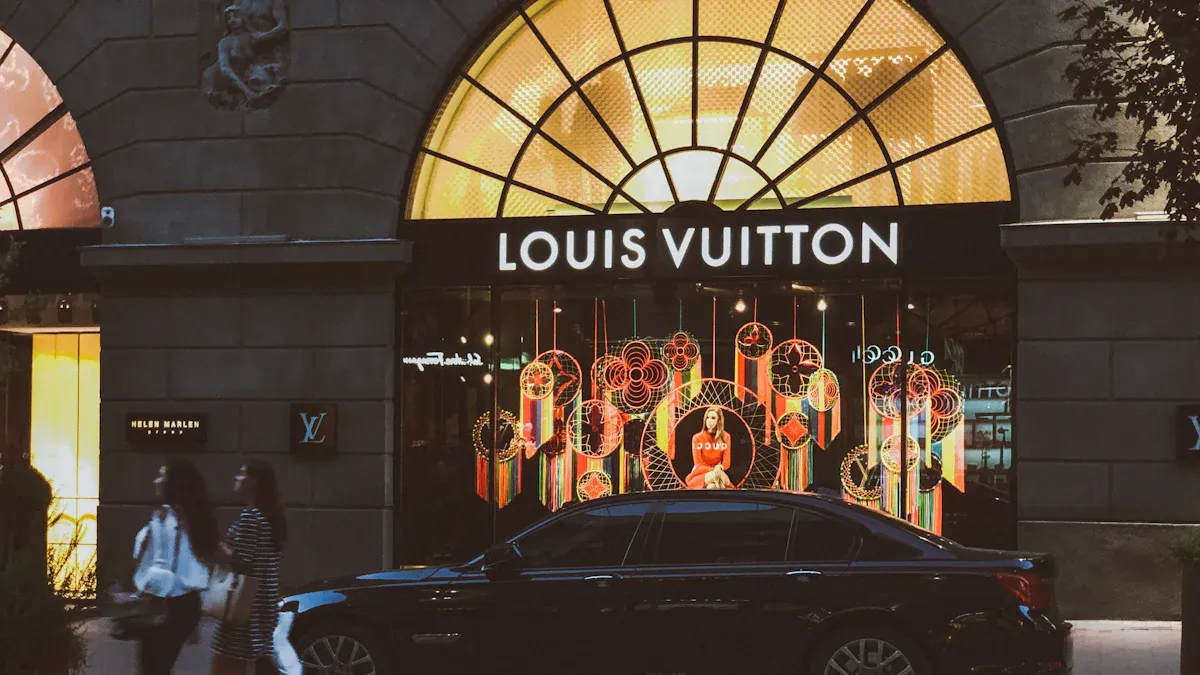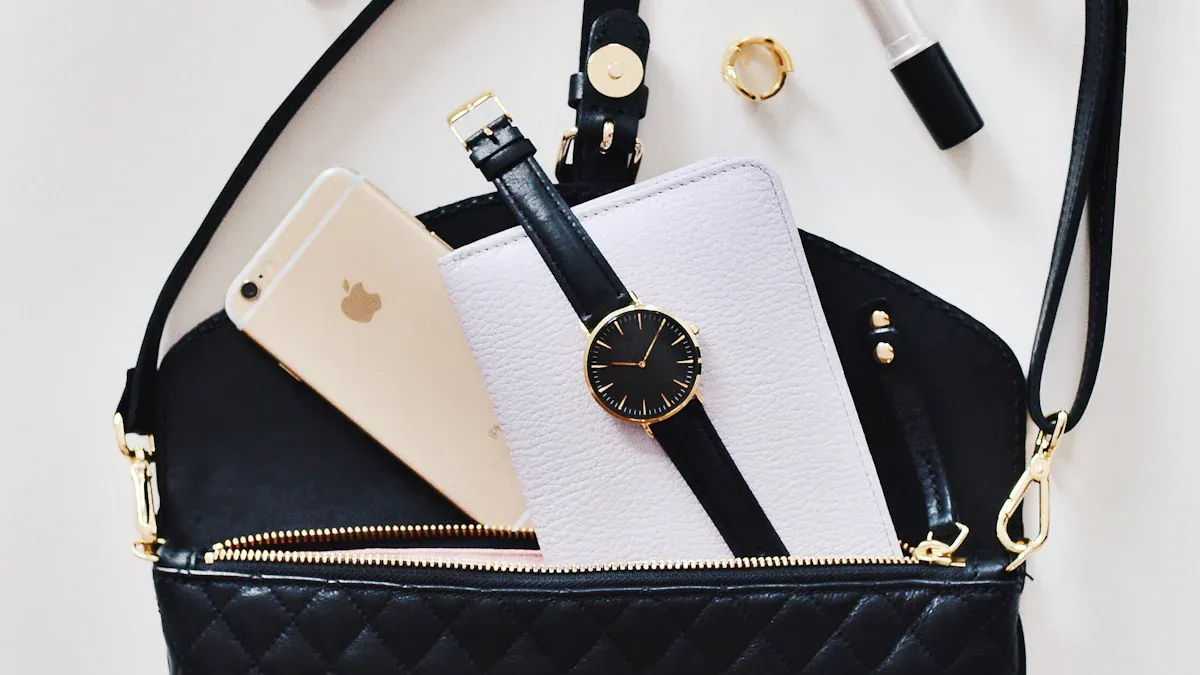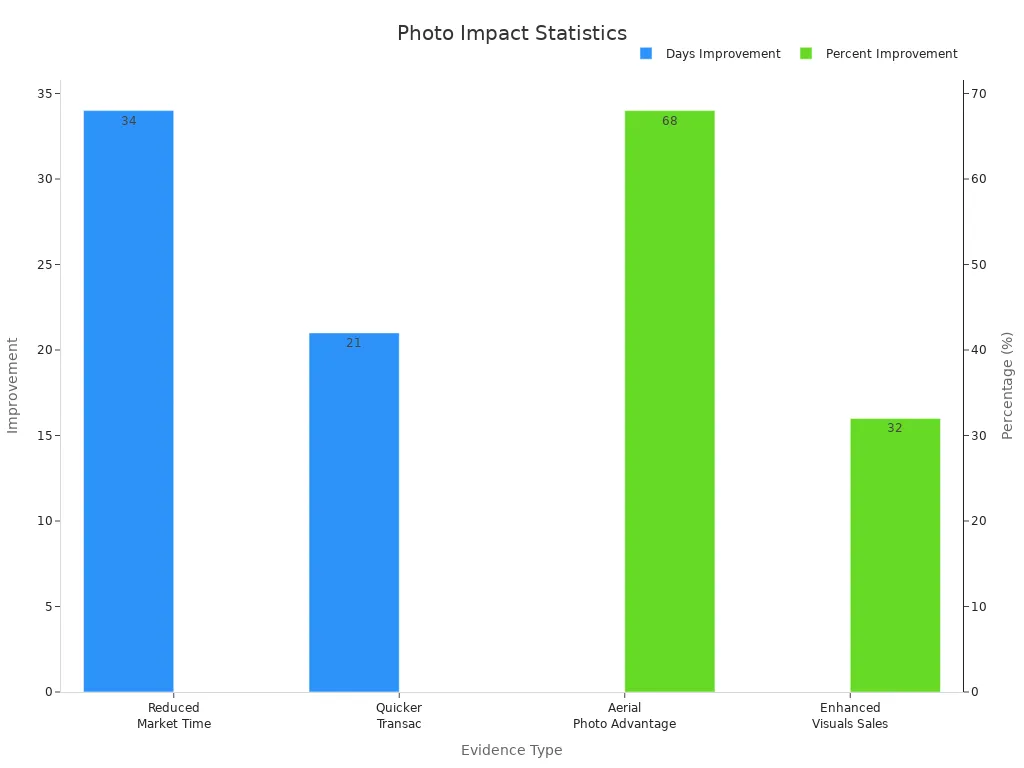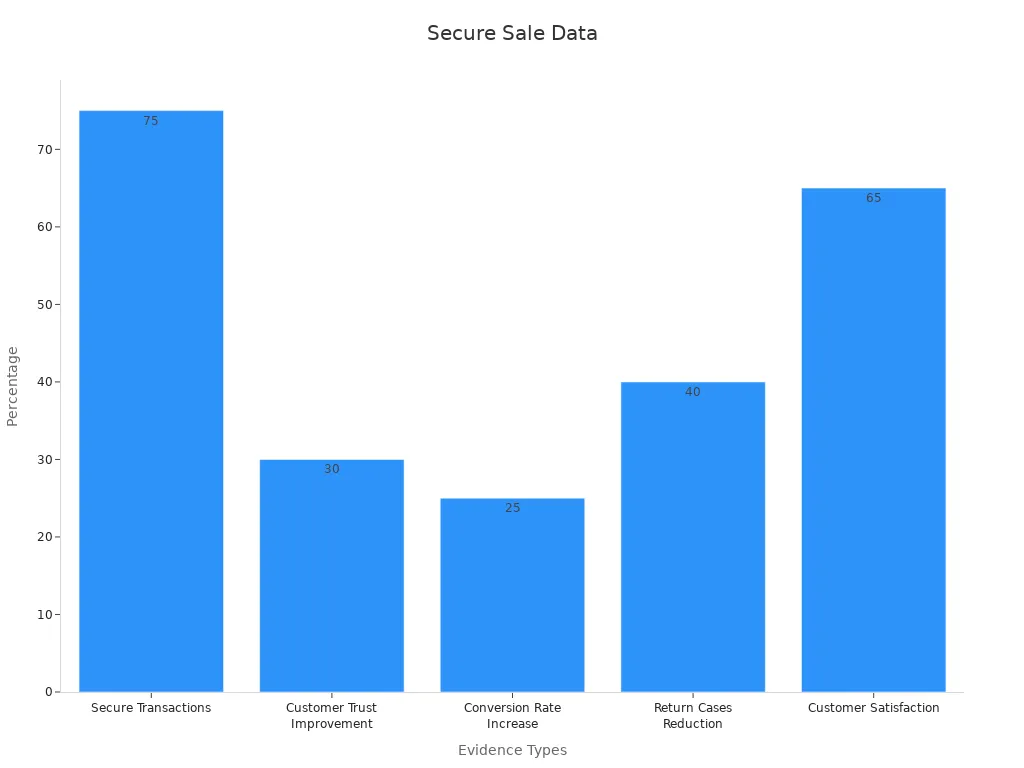How to Sell Your Luxury Items for the Best Price
Selling your luxury items can feel like a win-win situation. You declutter your space and earn extra cash at the same time. Did you know the luxury goods market was worth around $253.7 billion in 2023? That number is expected to skyrocket to $369.8 billion by 2030, with $115.4 billion coming from luxury apparel alone. This growth means there's a huge demand for high-end items, making it a great time to sell your luxury items. Whether you're looking to sell a designer bag or a luxury watch, the right approach can help you secure the best deal.
Key Takeaways
Make sure your luxury items are real to raise their value. Check serial numbers, logos, or get expert opinions to prove they’re authentic.
Be honest about the condition of your items. Clean or fix them if needed to make them worth more.
Look up market trends to price your items fairly. Learn when people want your items most to sell them better.
Pick the best place to sell. Online stores, consignment shops, and auctions each have good options for selling luxury stuff.
Keep transactions safe by checking buyers and using secure payments. This keeps you safe and helps buyers trust you.
Determining the Value of Your Luxury Items

When it comes to selling designer items, understanding their value is the first step to getting the best price. Let’s break it down into three key areas: identifying and authenticating your items, assessing their condition, and researching market trends.
Identifying and Authenticating Your Luxury Items
Before listing your items for sale, you need to confirm their authenticity. Buyers in the secondhand market are willing to pay a premium for genuine luxury goods, but they’re also cautious about replicas. So, how can you prove authenticity? Start by familiarizing yourself with the unique characteristics of the designer brand. For example, logos, stitching, and materials often reveal whether an item is authentic versus replica.
Here’s a quick checklist to help you verify authenticity:
Inspect the packaging and labels for any signs of tampering or poor quality.
Check for serial numbers, barcodes, or authentication codes.
Compare the item’s weight, materials, and craftsmanship to known standards.
Seek professional appraisal or use modern technologies like blockchain-based authentication.
These steps not only confirm authenticity but also boost the perceived value of your items.
Assessing the Condition of Your Items
The condition of designer handbags, shoes, or jewelry plays a huge role in determining their resale value. Buyers want items that look as close to new as possible. Take a close look at your items. Are there scratches, stains, or signs of wear? If so, consider cleaning or restoring them before listing.
Here’s a tip: Be honest about the condition. If you’re upfront about flaws, buyers are more likely to trust you. Use terms like “gently used” or “like new” to describe items accurately. This transparency can make all the difference in the resale market.
Researching Market Value and Trends
Understanding the market is crucial when selling designer handbags or other luxury items. The luxury goods market is booming, with demand rising in regions like Asia. Major brands are seeing significant sales growth, which means there’s a strong appetite for high-end products.
To get a sense of your item’s value, research recent sales of similar items. Look at online marketplaces, auction results, and consignment stores. Here’s a snapshot of the market trends:
Market Insights | Key Data |
|---|---|
Global luxury goods market growth | |
Swiss watch exports | Increasing, especially in Asia |
French luxury brands | 20% sales growth globally |
By staying informed about market trends, you can price your items competitively and attract serious buyers.
Choosing the Best Platforms to Sell Your Luxury Items
Finding the right platform to sell your designer items can make all the difference in securing the best price. Whether you prefer the convenience of online marketplaces, the expertise of consignment stores, or the prestige of auction houses, each option has unique benefits. Let’s explore these platforms to help you decide the best place to sell luxury bags, watches, and more.
Selling on Online Marketplaces
Online marketplaces are a popular choice for selling designer items. They offer a vast audience of buyers actively searching for luxury goods. With the right listing, you can attract serious buyers quickly. Did you know that 54% of UK shoppers and 52% of US luxury consumers research online before making a purchase? This shows how important it is to have a strong digital presence.
To maximize your success, focus on creating detailed listings with high-quality photos and accurate descriptions. Many buyers rely on retail websites and multi-brand platforms to compare prices and find the best deals. Personalized communication, like email reminders, can also help recover abandoned carts, boosting your chances of closing a sale.
Using Consignment Stores for Luxury Items
Consignment stores are an excellent option if you want a hassle-free selling experience. These stores handle everything from pricing to marketing, ensuring your items reach the right buyers. The US fashion resale market is booming, driven by the growing demand for vintage and luxury items. This makes consignment stores a profitable choice for sellers.
Some stores use AI-powered pricing to adapt to market trends, allowing you to earn up to a 22% premium on certain goods. Seasonal items, like costume jewelry, can see a 70% margin boost during peak times like the holiday season. If you’re selling Swiss watches, verified pieces often maintain margins between 58-70%, making them a lucrative option.
Strategy | Impact | Margin Potential |
|---|---|---|
Rental-Resale Hybrid | Generates multiple revenue streams | Up to 120% |
AI-Powered Pricing | Adapts prices based on market trends | 22% premium on certain goods |
Automated Operations | Cuts operational costs | Preserves 7-12% margins |
Exploring Auction Houses for High-End Sales
If you’re selling rare or high-value designer items, auction houses can be a great choice. They specialize in connecting sellers with collectors willing to pay top dollar for unique pieces. Some renowned auction houses have long catered to collectors seeking rare and exclusive pieces, reinforcing the growing global demand for authenticated luxury. High-value luxury items continue to attract serious global buyers, with the overall high-end resale and auction market reaching multi-billion-dollar volumes in 2023, highlighting the strong demand for authenticated, investment-grade pieces.
Auction houses often provide appraisals and marketing tailored to your items, ensuring they stand out. While this option may take longer than others, the potential for higher returns makes it worth considering for exclusive pieces.
Preparing Your Luxury Items for Sale

Selling luxury items successfully starts with making them look their absolute best. Buyers are drawn to well-maintained, beautifully presented pieces. Let’s dive into how you can clean, package, and photograph your items to maximize their appeal.
Cleaning and Restoring Your Items
First impressions matter, especially when selling luxury goods. A clean, polished item not only looks better but also signals authenticity and care. Start by gently cleaning your items using materials suited to their specific needs. For example, use a soft cloth for leather bags or a jewelry cleaning solution for gold and silver pieces. Avoid harsh chemicals that could damage delicate surfaces.
If your items show signs of wear, consider professional restoration. A minor investment in repairs can significantly boost their resale value. For instance, a designer handbag with restored stitching or a watch with polished glass can fetch a much higher price. Always highlight these efforts in your listing to reassure buyers of the item’s quality.
Tip: Document the cleaning process with photos. This adds transparency and builds trust with potential buyers.
Packaging and Presentation Tips
How you package your items can make or break a sale. Buyers expect luxury items to arrive in packaging that reflects their premium nature. Use branded dust bags, sturdy boxes, or even the original packaging if you have it. This not only protects the item during shipping but also enhances its perceived value.
Here’s a quick guide to luxury packaging:
Key Element | Description |
|---|---|
Brand Identity | Use packaging that aligns with the brand’s image for better recognition. |
Sustainable Packaging | Eco-friendly materials appeal to modern buyers. |
Custom Packaging | Personalized touches create a memorable unboxing experience. |
Consistency in Branding | Maintain a cohesive look to build trust and loyalty. |
Remember, thoughtful presentation can leave a lasting impression, encouraging buyers to choose you over others.
Taking High-Quality Photos for Listings
Photos are your virtual storefront. High-quality images can make your items stand out and attract serious buyers. Use natural lighting to capture the true colors and details of your items. Take multiple shots from different angles, including close-ups of logos, stitching, and any unique features that prove authenticity.
Luxury brands like Cartier and Burberry use stunning visuals to tell their story. You can do the same by showcasing your items in a way that highlights their craftsmanship. According to research, listings with professional photography sell up to 32% faster than those without. Here’s a visual breakdown of how quality photos impact sales:

Pro Tip: Use a neutral background to keep the focus on your item. Avoid clutter or distracting elements in your photos.
By cleaning, packaging, and photographing your items thoughtfully, you’ll not only attract more buyers but also command higher prices. PlushPast makes it easy to showcase your authenticated luxury items to a discerning audience, ensuring you get the best value for your efforts.
Maximizing the Sale Price of Your Luxury Items
When you sell your luxury items, getting the best possible price often comes down to timing, pricing, and negotiation. Let’s explore how you can maximize your selling price while staying competitive in the market.
Timing Your Sale for Maximum Value
Timing is everything when it comes to selling luxury items. Certain months or seasons see higher demand for specific categories. For example, holiday seasons often drive up interest in designer bags and jewelry, while spring might be the perfect time to sell luxury watches as people prepare for special occasions.
Luxury brands use advanced tools like AI and demand forecasting to plan their sales strategies. You can take a similar approach by researching seasonal trends and understanding when buyers are most active. For instance, analyzing sales data can reveal peak periods for your items. By aligning your sale with these trends, you can attract more buyers and achieve your desired profit margins.
Tip: If you’re unsure about timing, consider consulting with experts or platforms like PlushPast, which specialize in luxury resale and can guide you on the best time to list your items.
Setting Realistic and Competitive Prices
Pricing your items correctly is crucial. A price that’s too high might scare off buyers, while one that’s too low could leave money on the table. Start by researching the market. Look at what similar items are selling for on trusted platforms. This will give you a clear idea of the competitive landscape.
Here are some pricing strategies to consider:
Premium pricing: Position your item as exclusive and high-quality.
Value-based pricing: Set a price based on what buyers perceive as the item’s worth.
Dynamic pricing: Adjust your price based on demand and market trends.
For example, Gucci used data analytics to enhance customer experience, leading to an 8% revenue increase in 2022. Similarly, Montblanc leveraged predictive analytics to boost revenue by 21% in 2023. You can apply these principles by understanding your buyers and setting a price that reflects both quality and demand.
Negotiating Effectively with Buyers
Negotiation is an art, and mastering it can help you secure the best selling price. When buyers make offers, stay firm but flexible. Highlight the unique features of your item, such as its condition, authenticity, or rarity. This reinforces its value and justifies your asking price.
Here’s a simple negotiation framework:
Start with a slightly higher price than your minimum acceptable amount.
Be prepared to explain why your item is worth the price you’re asking.
Stay polite and professional, even if buyers try to lowball you.
Remember, buyers appreciate transparency. If you’ve invested in cleaning or restoring your item, mention it. This not only builds trust but also helps justify your desired profit margins.
By timing your sale strategically, setting competitive prices, and negotiating effectively, you can maximize the value of your luxury items. PlushPast offers a seamless platform to connect with discerning buyers who appreciate the quality and authenticity of your designer pieces.
Ensuring a Smooth and Secure Transaction
Selling luxury items requires more than just finding a buyer—it’s about ensuring the process is smooth, secure, and stress-free. By verifying buyer credibility, using secure payment methods, and following best practices for shipping, you can protect yourself and your items while creating a positive experience for everyone involved.
Verifying Buyer Credibility
Before finalizing a sale, it’s essential to confirm that the buyer is trustworthy. This step reduces the risk of fraud and ensures a secure transaction. Start by checking reviews or ratings if the buyer is purchasing through a platform. If they’re new or have limited feedback, ask for additional details to verify their identity.
Here are some effective methods to assess buyer credibility:
Method | Description |
|---|---|
Research on Buyers | Look into their reviews, ratings, and overall reputation. |
Product Verification | Request extra photos or documentation to confirm authenticity. |
Secure Payment Options | Use payment methods with buyer and seller protection. |
Blockchain Authentication | Leverage blockchain technology for digital certificates that verify authenticity. |
Blockchain introduces innovative ways to authenticate luxury items. You can effortlessly verify product authenticity through digital certificates or unique identifiers on the blockchain.
By taking these steps, you’ll feel more confident about the buyer and the transaction.
Using Secure Payment Methods
Secure payment methods are non-negotiable when selling luxury items. Over 75% of consumers prioritize secure online transactions, and using trusted payment gateways can improve customer trust by up to 30%. Platforms like PlushPast integrate secure payment systems to protect both buyers and sellers.
Here’s why secure payments matter:
They reduce the risk of fraud.
They offer dispute resolution in case of issues.
They build trust, encouraging repeat transactions.
Always avoid direct bank transfers or unverified payment apps. Instead, opt for methods like credit cards or escrow services that provide an added layer of security.
Shipping and Delivery Best Practices
Shipping luxury items requires extra care to ensure they arrive safely and maintain their value. Start by using high-quality packaging to protect your items during transit. Branded dust bags or sturdy boxes work well. Additionally, choose a reliable shipping carrier that offers tracking and insurance.
Follow these best practices for a seamless delivery process:
Use an Order Management System (OMS) to centralize order details.
Implement a Warehouse Management System (WMS) for efficient inventory handling.
Optimize shipping routes with a Transportation Management System (TMS).

Fast shipping is also crucial. Studies show that 23% of consumers abandon their orders due to slow delivery. By prioritizing speed and reliability, you’ll enhance customer satisfaction and increase the likelihood of repeat business.
Taking these steps ensures your luxury items reach their new owners in perfect condition, leaving a lasting impression.
Selling your luxury items for the best price doesn’t have to be complicated. By focusing on strategies like understanding their value, choosing the right platform, and preparing them to shine, you can attract serious buyers. Brands like Lululemon have shown that premium pricing works when paired with quality and presentation. Whether it’s a designer bag or a luxury watch, your items deserve the spotlight. Start today, and turn those treasures into cash with confidence. The right buyer is waiting!
FAQ
How do I know if my luxury item is authentic?
Authenticity is key when selling luxury items. Check for serial numbers, logos, and craftsmanship. Compare your item to official brand standards. You can also use professional authentication services or apps for added assurance. Buyers value verified authenticity, so this step is worth it.
What’s the best platform to sell my luxury items?
It depends on your goals. Online marketplaces work well for quick sales. Consignment stores handle the process for you. Auction houses are ideal for rare, high-value pieces. Research each option to find the best fit for your item.
Should I clean my luxury item before selling it?
Yes! Clean items attract more buyers and higher offers. Use appropriate cleaning methods for your item’s material. For example, use a soft cloth for leather or a jewelry cleaner for metals. If needed, consider professional restoration to boost its value.
How can I avoid scams when selling luxury items?
Stick to secure payment methods like PayPal or escrow services. Verify buyer credibility by checking reviews or ratings. Avoid sharing personal information. Platforms with buyer and seller protections, like PlushPast, can help ensure a safe transaction.
When is the best time to sell luxury items?
Timing depends on the item. Holiday seasons are great for jewelry and bags. Spring works well for watches. Research market trends to identify peak demand periods. Selling at the right time can help you get the best price.
A Trusted Space for Luxury Exchange
As the world of luxury resale continues to evolve, having a platform that blends trust, transparency, and elegance becomes essential. That’s where PlushPast comes in—a thoughtfully designed space where individuals can confidently buy and sell authenticated luxury items. Whether you're letting go of a cherished handbag or searching for the perfect pair of designer shoes, PlushPast ensures a seamless experience with verified authenticity, fair pricing, and secure transactions. Every piece on the platform is part of a carefully curated collection, making it not just a marketplace, but a community built around shared appreciation for craftsmanship and style. If you're ready to explore or contribute to this global network of luxury lovers, visit www.plushpast.com and discover how simple, inspiring, and secure the resale experience can be.
Disclaimer:
The information provided in this article is for general informational purposes only and does not constitute professional advice, an endorsement of any product, or a guarantee of authenticity or condition for the items referenced. plushpast does not offer personalized guidance on buying or selling decisions, and the content of this article should not be relied upon as such. We strongly recommend that you conduct independent research and/or seek relevant expertise suited to your specific circumstances before making any transaction decisions. plushpast disclaims any liability arising from decisions made based on the information presented in this article.